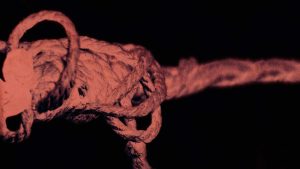Table of Contents
- Introduction: What is D/S Dynamics?
- The Basics of Dominance and Submission
- Forms of D/S Dynamics
- The Role of Communication in D/S Dynamics
- Challenges of D/S Dynamics
- How to Build a Sustainable D/S Dynamic?
- Conclusion
- FAQ
1. Introduction: What is D/S Dynamics?
D/S, or Dominance and Submission, is a central dynamic in BDSM that involves the play of power and submission within a relationship. D/S dynamics represent a relationship where one party (the dominant) exercises power, while the other party (the submissive) is in a subordinate role. This dynamic affects not only the physical aspect of the relationship but also deeply impacts emotional and psychological levels.
D/S dynamics can be short-term and involve a single scene, or they can be long-term relationships where roles and boundaries continuously evolve. Such relationships often rely on trust, communication, and consent, offering participants the opportunity to explore boundaries, needs, and desires.
2. The Basics of Dominance and Submission
Role of Power
Foundation of dominance and submission is the play of power. The dominant party directs the situation, while the submissive party accepts and follows the dominant’s instructions. It is important to understand that power does not mean degrading or manipulating the partner but rather providing a defined framework and control within the relationship.
Handling power is built on trust. Dominant’s responsibility is to respect the submissive’s boundaries and not to abuse the power. Play of power allows participants to connect on a deeper level and explore their own desires and needs.
The Significance of Consent and Trust
Consent is fundamental in D/S dynamics. Every activity and interaction must be based on consent, which both parties have discussed and agreed upon beforehand. Trust is essential for a healthy and safe relationship. The dominant’s responsibility is to ensure that the submissive always feels comfortable, and that there is clear communication before any activity.
Consent can be reviewed and modified at any time if needed. Trust is continually built, and the depth of the relationship is indicated by how secure the partners feel with each other.
3. Forms of D/S Dynamics
Short-Term and Long-Term Dynamics
D/S dynamics can be either short-term, involving a single scene, or long-term relationships.
Short-Term Dynamics: These dynamics typically relate to a specific scene or situation and often occur during events, parties, or one-time occasions. Here, the dominant and submissive roles are active for a brief period and the activities are tailored to the particular situation.
Long-Term Dynamics: These relationships typically develop and change continuously. The dominant and submissive roles operate as part of daily life, and the depth and intensity of the relationship evolve over time. Long-term dynamics often include daily routines, rules, and ongoing communication.
Scenarios and Roleplays
D/S dynamics can also manifest through scenarios and roleplays, which involve various situations and roles.
Scenarios: These are pre-defined scripts that outline the roles and interactions of the dominant and submissive parties. Scenarios can be fantasies, stories, or special events that partners plan together.
Roleplays: During roleplays, partners assume different characters and roles. These roleplays can be one-time or recurring, and often extend into the realms of fantasy and creativity.
4. The Role of Communication in D/S Dynamics
Discussing Expectations and Boundaries
Communication is crucial in D/S dynamics. It is important to discuss expectations and boundaries before any activity. The dominant must clearly define what activities are planned, and the submissive must have the opportunity to express their needs and limits.
Defining boundaries helps ensure that everyone feels safe and that the experience is positive for all. Maintaining ongoing communication ensures that any changes or new needs are addressed promptly.
Using Safewords
A safeword is an important tool that allows partners to stop an activity at any time if it becomes too intense or uncomfortable. The use of safewords ensures that everyone always feels safe and allows the relationship to remain under closer control.
The safeword should be discussed beforehand and clearly defined on when and how it should be used. It is usually a memorable and clear word that signals if something is not right.
5. Challenges of D/S Dynamics
Managing Fear and Anxiety
D/S dynamics often involve fear and anxiety, which need to be managed for the relationship to be healthy. To handle fear and anxiety between the dominant and submissive parties, it is important that both parties understand that every aspect of the relationship and activities must be discussed and agreed upon.
If fear and anxiety are not properly managed, they can negatively impact the relationship and the experience. Open communication and regular discussions can help address issues and ensure that everyone feels comfortable.
Overcoming Shame and Stigma
D/S dynamics are often associated with shame and stigma, which must be overcome for the relationship to be healthy. To address social prejudices and negative perceptions, it is important for partners to recognize that D/S dynamics are not just a sexual preference but a legitimate form of relationship.
Self-esteem and open communication can help overcome shame and stigma. Partners should support each other and acknowledge that D/S dynamics can enrich the depth and richness of their relationship.
6. How to Build a Sustainable D/S Dynamic?
Flexibility and Adaptation
A sustainable D/S dynamic requires flexibility and adaptation. Relationships constantly evolve, and the dominant and submissive roles also change over time. It is important for partners to be open to changes and capable of adapting to new needs and preferences.
Flexibility helps ensure that the relationship remains sustainable in the long term and ensures that both parties are continuously satisfied and happy. The ability to adapt allows the relationship to meet changing needs and circumstances.
Continuous Improvement of the Relationship
The D/S dynamic must be continuously developed to remain sustainable. This includes trying new activities, scenarios, and roleplays, as well as gaining a deeper understanding of the relationship. Continuous development helps keep the relationship fresh and exciting, providing opportunities for partners to continue exploring each other’s needs and desires.
To improve the relationship, it is important for partners to regularly talk with each other and discuss new ideas and concepts. Open communication and setting joint goals can help keep the relationship interesting and meaningful.
7. Conclusion – D/S Dynamics
D/S dynamics are one of the most complex and profound aspects of BDSM, offering the opportunity for partners to explore the boundaries of dominance and submission. The foundation of a successful D/S relationship is trust, communication, and consent. With the right approach and continuous development, D/S dynamics can enrich relationships and help participants build deeper connections with each other.
8. FAQ – D/S Dynamics
What is a safeword?
- A safeword is a predetermined word that partners use during D/S activities to indicate if something is not right or if they want to stop the activity. Its use ensures safety and comfort for all participants.
How should we discuss boundaries?
- Boundaries should be discussed openly and honestly before engaging in any D/S activities. Both parties should express their limits and preferences, and these should be respected throughout the relationship.
Can D/S dynamics be part of a long-term relationship?
- Yes, D/S dynamics can be part of a long-term relationship. Many people find that integrating D/S dynamics into their daily lives helps strengthen their bond and deepen their connection.
What should we do if we encounter difficulties?
- If difficulties arise, it is essential to communicate openly and address any issues together. Seeking professional advice or counseling can also be helpful in resolving complex problems.















